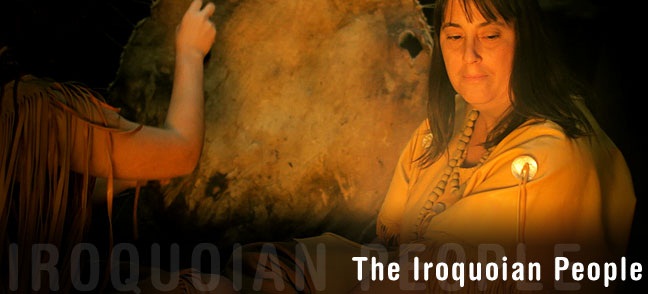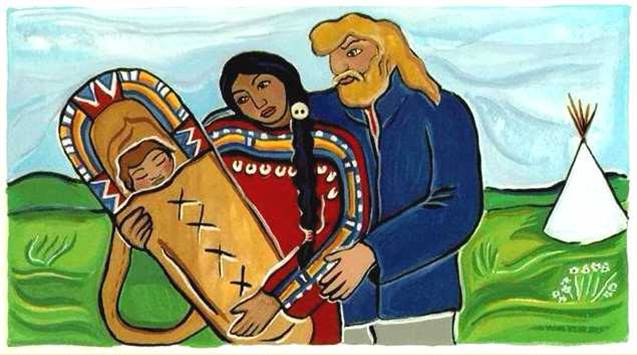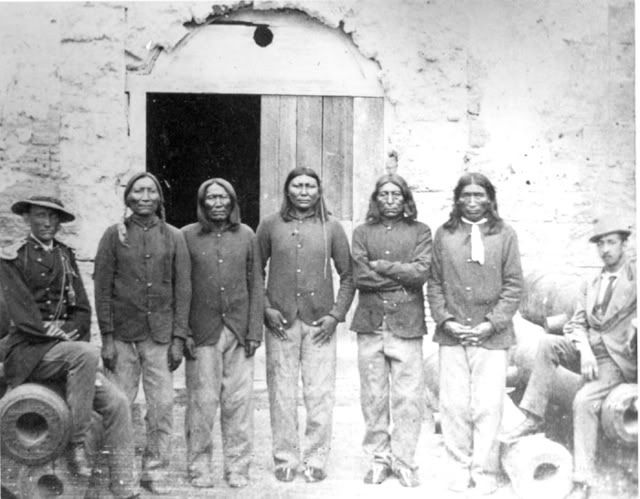The Iroquoian Language Family

The Iroquoian language family, found in the Eastern Woodlands Culture Area, includes the languages of the League of Five Nations (Oneida, Onondaga, Mohawk, Seneca, and Cayuga), Nottoway, Tuscarora, Cherokee, Huron, Susquehannock. Some linguists feel that this language family may be a part of the larger Macro-Siouan phylum, which indicates a very distant relationship with Siouan.
With regard to the origins of the Iroquoian language family, there are some who feel that Iroquoian had a homeland outside of the Northeast and thus Iroquoian-speakers are intrusive in the region. However, archaeological data at the present time does not support this hypothesis.
Some linguists feel that Iroquoian has been spoken in the area of central New York state and north-central Pennsylvania for at least four millennia. From here, they suggest, there were migrations first to the south and then to the north and immediate west.
Historical linguists have long noted that some parts of language tend to change faster and earlier than others, while other parts of language tend to resist change. Using a standard word list chosen from the most resistant vocabulary, linguists are able to compare languages within the same language family to determine how long ago two languages shared a common ancestor, how long ago they separated from each other. This process is called glottochronology.
Glottochronology suggests that Southern Iroquoian (Cherokee) broke off about 1800 BCE. Linguist Michael Foster, in a chapter in the Handbook of North American Indians, writes that “the divergence between Northern and Southern Iroquoian is probably somewhat greater than that between any of the languages of the Germanic or the Romance families, but not so great as that between languages belonging to the separate branches of Indo-European.”
While the Tuscarora were located geographically close to the Cherokee, their language is actually Northern Iroquois. Glottochronology suggests that Tuscarora separated from the Five Nations’ languages about 400 BCE.
Within the northern division of Iroquoian, Onandaga, Cayuga, and Seneca broke off from Mohawk and Oneida between 1,000 and 1,500 years ago. The relationship between Mohawk and Oneida is fairly close with a great deal of mutual intelligibility between the two languages.
With regard to the division of Iroquoian into distinct languages, linguist Blair Rudes, writing in Anthropological Linguistics, reports: “Among Northern Iroquoian languages, it is fairly certain that the earliest division involved a dialect group comprising the ancestors of the Tuscarora and Nottoway.”
Next came the splitting off of Cayuga and the Wendat languages (Huron and Wyandot). This was followed by the Seneca, then the Onondaga, and then the Oneida and Mohawk.
In the northeastern culture area, Iroquoian and Algonquian people lived next to each other, they traded, they fought, and they intermarried. With regard to language, there was relatively little borrowing between the two language families.
Linguists consider the Iroquoian languages to be polysynthetic, fusional, and incorporating. Floyd Lounsbury, in his chapter on Iroquoian languages in the Handbook of North American Indians, explains: “That is to say, words may be made up of a great many component parts, whose relative order is strictly determined; these parts are variable in their phonetic forms (adjusting to variable contexts) and are unintelligible and without meaning if taken out of proper context; and verb forms may incorporate noun roots—as direct objects with transitive verb roots, and as subjects with intransitive verb roots—as well as incorporating subject and object pronominal preference.”
As with other American Indian groups, the Iroquoian-speakers took pride in good oratory. The Iroquoian people appreciated and cultivated skillful language use, particularly in political and ceremonial oratory. Story-telling and snappy repartees were highly regarded skills.
While most American Indian languages did not develop writing, the Cherokee—the most southern branch of the Iroquoian language family—not only developed their own writing system, they also had a higher rate of literacy than their English-speaking neighbors.
In 1821, Sequoia (also spelled Sequoya) developed a syllabary of 86 characters for Cherokee which made it possible for Cherokee to become a written language. Sequoia neither spoke nor read English, but he had seen the English alphabet and so took many of these letters to represent Cherokee sounds. There is, however, no correspondence between the sounds represented in the two languages. The letter D, for example, is pronounced a in Cherokee.
The Sequoia syllabary made it possible for a Cherokee speaker to quickly learn to read and write in Cherokee. It is said that Sequoia could begin teaching his syllabary in the morning and by sundown his students would be literate in Cherokee. Linguist Kenneth Katzner, in his book The Languages of the World, writes: “That an unlettered hunter and craftsman could complete a task now undertaken only by highly trained linguists must surely rank as one of the most impressive intellectual feats achieved by a single man.”



